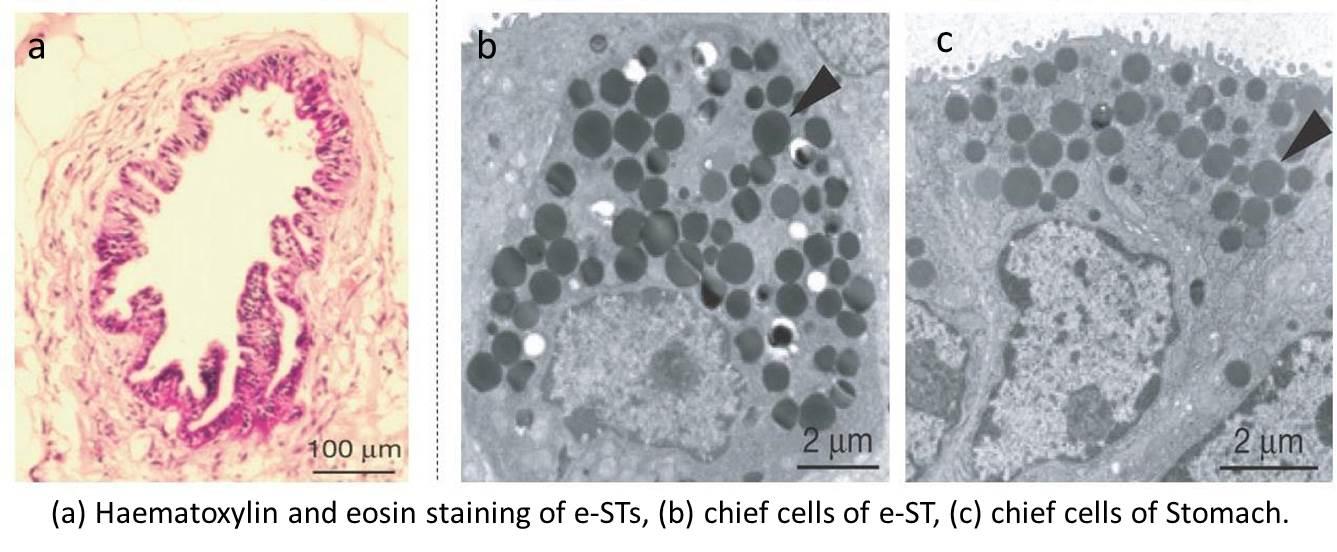Research News
Stomach cells developed from mouse ES cells~Good news to drug discovery
If a prototype model of stomach could be built by regeneration in a test tube, we would be able to expect the big progress in the researches of organ development and disease. The research team Pi-Chao Wang and Kuchitaka Ono from the University of Tsukuba and the National Institute of Advanced Industrial Science and Technology developed the method to build three-dimensional stomach tissues with a part of actual stomach function, using mouse ES cells (embryonic stem cells) only by a cell culture in a test tube.
This research focused carefully on a very early stage as stomach primordium, origin cells to become stomach, in viviparous period. Looking at genomes of Barx1 and Sox2 as the indicators of expressions in stomach primordium, the research team identified the ideal conditions for cell culture so that ES cells can be induced to differentiate effectively for primordium structure as stomach. Moreover, a long-term and three-dimensional cell cultures of the stomach promordium structure successfully made three-dimensional stomach tissues that resembles gastric gland, an actual part of stomach.
The gastric gland made in the cultured stomach tissue has gastric chief cells with digestive enzymes, which means that the cultured gastric gland is similar to the gastric chief cell in the stomach of a newborn infant when contrasting structurally. Another notable finding this time regarding this stomach tissue was that it secretes a digestive enzyme Pepsinogen in the cell culture. The enzyme can secrete acid in response to the stimulus of histamine, which causes decline of pH in cell culture. Based on these findings, the researchers suggest that stomach tissues made from ES cells own both digestive enzymes and secretion of gastric acid as partial functions of stomach. As the next step in future, the team aims to developing the method to build human stomach tissue made by human iPS (induced pluripotent stem cell).

Further differentiation of the embryonic stem cell-derived stomach tissue (e-ST) with functionally and structurally mature corpus cell types in vitro.
Original Paper
Taka-aki K. Noguchi, Naoto Ninomiya, Mari Sekine, Shinji Komazaki, Pi-ChaoWang, Makoto Asashima, and Akira Kurisaki1, Nature Cell Biology, Generation of stomach tissue from mouse embryonic stem cells. doi:10.1038/ncb2300


